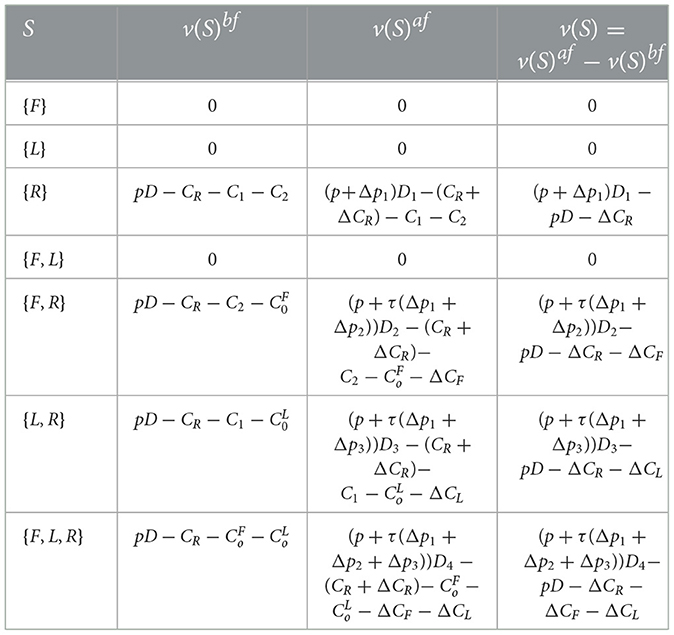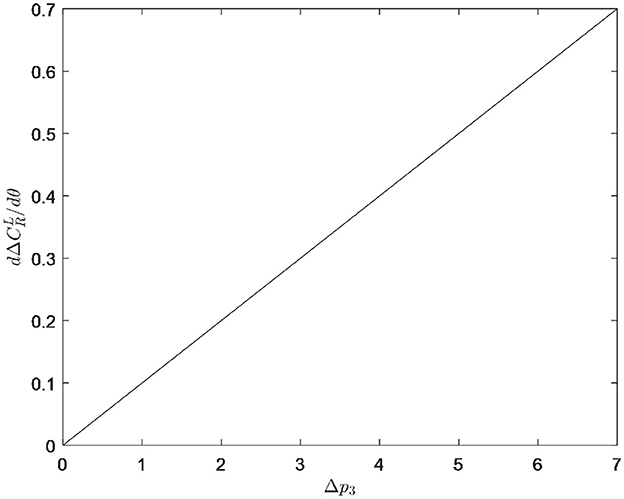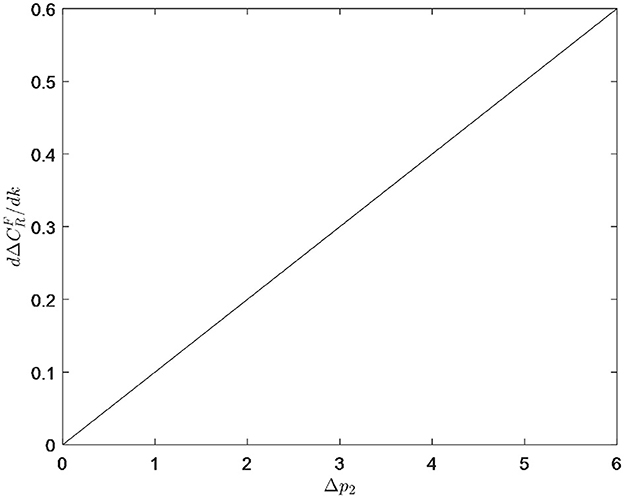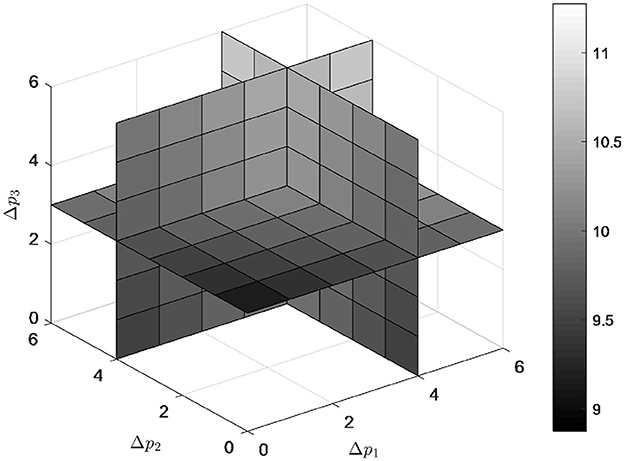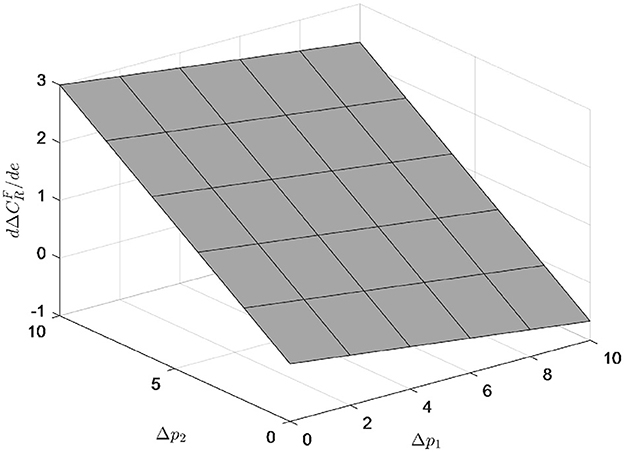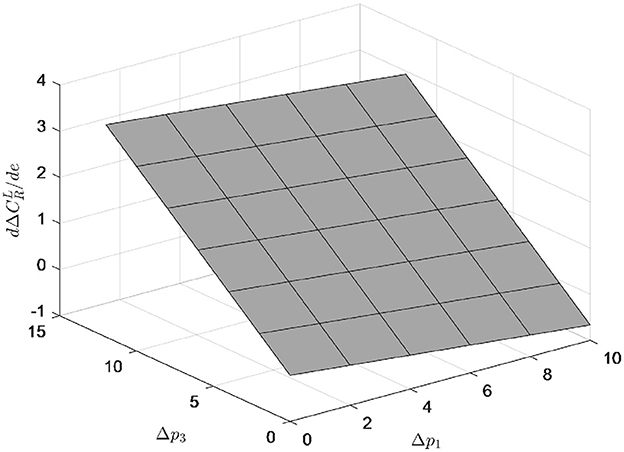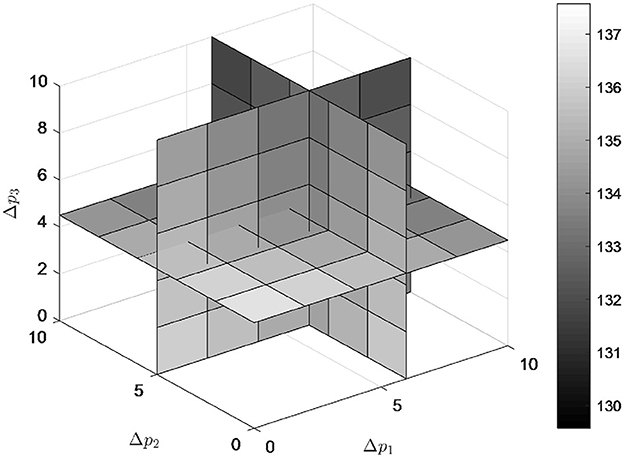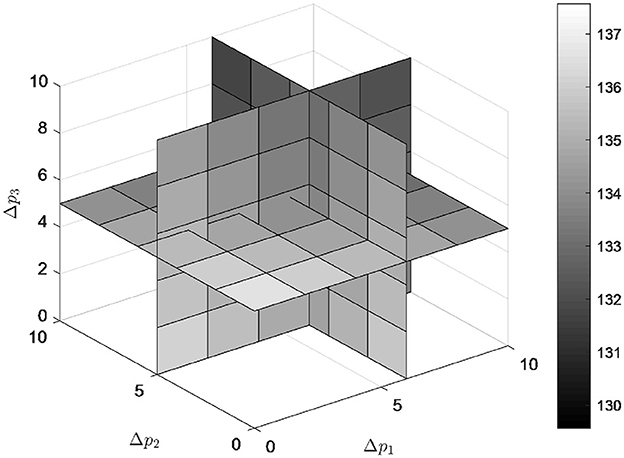- 1Management School, Harbin University of Commerce, Harbin, China
- 2Postdoctoral Workstation of Business Administration, Harbin University of Commerce, Harbin, China
Using digital to enable high-quality commercialization of agricultural products, accelerate the transformation of agriculture to market, and transform agricultural products to quality are the key to leverage the upgrading of agricultural industry and meet consumer demand. The implementation of reasonable value sharing is of great significance to ensure the smooth commercialization of high quality agricultural products. This study considers the digital input of multiple subjects, builds a value-added sharing model of the high-quality commercialized value of digitally empowered agricultural products, and uses the Shapley value method to explore reasonable conditions for value-added sharing based on identifying the value-added value of multiple subjects after high-quality commercialization of digitally empowered agricultural products. The three main interests of the study are farmers, logistics companies, and retail enterprises. The findings indicate that various entities involved in the superior commercialization of agricultural products enabled by digital technology will partake in the value-added benefit of such commercialization, and the extent of digital investment made by these entities and the outcomes of their superior commercialization will determine how value-added sharing is differentiated. Farmers and logistics companies are more willing to participate in digitalization when the cost difference that retail companies pay them exceeds the cost change of their digital enabling high-quality commercialization and a reasonable amount of value-added value is obtained. This helps to form a logically closed loop of “digital empowerment — quality enhancing — value increasing” of value-added sharing. To achieve the high-quality commercialization of agricultural products based on the principle of acceptable value value-added sharing, various subjects should develop a fair value value-added sharing plan that takes into account the varying degrees of digital investment and price variations.
1 Introduction
With the continuous change in residents' consumption structure and pattern, consumer demand presents diversified, high-quality and personalized characteristics, which puts forward higher requirements for commercializing agricultural products. However, the commercialization of agricultural products is influenced by socio-economic and institutional factors (Anteneh and Endalew, 2023), specialization of crop production (Sekyi et al., 2023), price fluctuations (Gebrie and Teka, 2019), technology adoption (Gobie and Wosene, 2021), credit (Sekyi et al., 2020), production scale (Nkegbe et al., 2022), and other factors, facing the problems of unreasonable supply structure, unbalanced supply quantity, and insufficient supply quality, it is necessary to vigorously strengthen government guidance, promote multi-subject union, increase technological investment, improve the commercialization of agricultural products, and achieve high-quality commercialization to meet the needs of consumption upgrading. China's “14th Five-Year Plan” includes the “Three Products and One Standard” as a key directive for quickening the “commercialization” process and enhancing its scope and effectiveness. It is certain that the achievement of high-quality commercialization of agricultural products will become a major topic in the context of upgrading consumption.
The level of digital technology has an important impact on the high-quality commercialization of agricultural products (Tuni et al., 2022; Zheng and Ma, 2023). Utilizing digital technologies like the Internet of Things, big data, artificial intelligence, automation, and robots can effectively increase agricultural productivity (Abiri et al., 2023; Bocean, 2024), solve the problem of “low production” that hinders the aggregation of agricultural products, increase the number of agricultural products that can be used for commercialization, and improve the commercialization of agricultural products. Furthermore, digital technologies such as the Internet of Things, blockchain, and big data can effectively realize the interoperability and sharing of information between production and consumption, and achieve the accurate docking of supply and demand in the integration of production and marketing (Kayikci et al., 2022; Mithas et al., 2022), alleviate the problem of insufficient market information, and promote small farmers to participate in the market and commercialize their products, bringing more profits to farmers. It's evident that achieving digital empowerment is a successful strategy for achieving premium agricultural product commercialization.
However, in the process of realizing high-quality commercialization of agricultural products, the leading enterprises often distribute far more value than other subjects. In contrast, other subjects such as small farmers are in a relatively weak position (Thorpe, 2018), and there is information asymmetry compared with leading enterprises, including obtaining and controlling human and other (social, financial, material and natural) in the form of capital, to mobilize the collective action of leadership, goals, priorities, and the resulting power and interests and beliefs (Campos and Madureira, 2019; Eidt et al., 2020; Hidayati et al., 2023), difficultly to fair and reasonable to produce high quality commercial value-added benefits, which may cause other main body to become less enthusiastic lead, ultimately hindering the smooth commercialization of high-quality digitally enabled agricultural products. Only by constructing a reasonable value-added sharing strategy can we stimulate the endogenous vitality of multiple subjects and ensure the success of high-quality commercialization of agricultural products.
The first literature related to this paper is the research on the commercialization of agricultural products. Commercialization of agricultural products generally refers to the process by which farmers transform agricultural products from relative self-sufficiency to commercialization and marketization to enhance the possibility of their interests (Gebrie and Teka, 2019). The commercialization of agricultural products is the key to promoting agricultural industrialization, commercialization, modernization, and sustainable development (Benitez-Altuna et al., 2024). On the one hand, the commercialization of agricultural products is an important driving force for structural transformation (Cazzuffi et al., 2020), which helps promote the development of agricultural production to be more market-oriented, regionalized, and commercialized (Tabe Ojong et al., 2022) to increase the per capita income of smallholder farming households (Dey and Singh, 2023; Ochieng et al., 2020) and reduce income poverty (Etuk and Ayuk, 2021; Ogutu and Qaim, 2019) and multidimensional poverty (Birhanu et al., 2021; Schulte et al., 2023) is an effective strategy for rural transformation in underdeveloped areas (Fan et al., 2023). On the other hand, the commodification of agricultural products enhances the diversity of household diets (Chegere and Kauky, 2022; Kihiu and Amuakwa-Mensah, 2021; Mulenga et al., 2021; Usman and Callo-Concha, 2021; Usman and Haile, 2022), significantly improving food security and dietary quality in terms of calorie and micronutrient consumption (Ogutu et al., 2020). The above literature fully affirmed the role of commercialization and brought more research significance for the study of high-quality commercialization of agricultural products.
The second type of literature related to this paper is the research on the digital empowered high-quality commercialization of agricultural products. The commercialization of high-quality agricultural products emphasizes that based on improving the commercialization rate of agricultural products, we should further improve the quality, circulation efficiency, and added value of agricultural products, and further promote the increase of agricultural efficiency and the increase of farmers' income. Digital technology has been widely used in agricultural product planting, production, processing, transportation, sales and other links, and some studies have pointed out that the application of digital technology can effectively promote agricultural operations to be more intelligent (Ruan et al., 2020), and the matching efficiency of agricultural supply and demand and circulation efficiency to be more efficient (Long and Li, 2023; Tang, 2023), better quality and safety of agricultural products (Konfo et al., 2023; Zhao and Zhang, 2021), and higher welfare level of farmers (Ma et al., 2022; Panggabean and Arsyad, 2023). The above research fully affirms the feasibility of digital empowerment to achieve high-quality commercialization of agricultural products. However, reasonable sharing of value added is a necessary condition for multiple subjects in the supply chain to invest in digital technology to realize high-quality commercialization of agricultural products. Without a reasonable sharing strategy of value-added, the enthusiasm of multiple subjects in the supply chain may be affected, and the success of high-quality commercialization of agricultural products may be difficult to guarantee. Based on this, this study will explore the problem of reasonable shared value appreciation of multiple subjects of high-quality commercialization of digitally empowered agricultural products from the perspective of value sharing.
In addition, in terms of the selection of research methods, Shapley value and Nash negotiation methods are commonly used in solving similar problems of value sharing at home and abroad. For example, Yang (2019) considered the unequal rights of various entities in the supply chain alliance and distributed the income of each entity in the “agriculture-super connection” model based on the Shapley value of the weight rights index to eliminate the unreasonable income distribution. Liu and Li (2022) improved the Shapley value based on the principal least squares contribution value to solve the problem of cooperative profit distribution in rural e-commerce. Meng et al. (2023) adopted the Shapley value method to optimize the benefit-sharing scheme of the four-level supply chain, and promoted the long-term stability of the cooperation relationship between enterprises in the supply chain, considering the constraints of alliances and the risk attitude of enterprises. Chen et al. (2021) used the revenue distribution method of the Nash-Harsanyi bargaining solution to rationally distribute the extra profits in the frequency conversion control auxiliary service market. According to the characteristics and applicability of each model, the Shapley value method is more applicable than the Nash negotiation method in solving the income distribution problem. First, the Shapley value method achieves an accurate match between individual income and actual contribution by deeply calculating the marginal contribution of each member in different alliance combinations and seeks a reasonable distribution plan to maximize the total income of the alliance on this basis, which not only ensures the due protection of individual interests of each member, but also effectively maintains the overall interests of the alliance. Better embodies the “individual rationality” and “collective rationality” of value distribution; Second, the Shapley value method does not only rely on bargaining power for distribution, but pays more attention to the maximization of actual contribution and overall benefits in the process of cooperation, and strives to reflect fairness and efficiency in distribution, rather than merely based on bargaining power, which can meet the generally accepted rationality rules of rational people. Third, from the calculation method, the Shapley value method is easier to solve than other methods.
To sum up, different from the existing relevant studies, this study aimed at the problem of value-added sharing of high-quality commercialized value of digitally empowered agricultural products, built a model of value-added sharing of high-quality commercialized value of digitally empowered agricultural products, and used Shapley value method to obtain value-added shared by farmers, logistics enterprises and retail enterprises. In addition, by referring to the relevant literature and methods of value measurement, the cost changes paid by retail enterprises to farmers and logistics enterprises are obtained, and the relationship between the digital input degree, the variable of agricultural product price change and the variable of cost change is discussed, so as to obtain reasonable sharing conditions of value appreciation. Finally, this study provides the theoretical basis and relevant management enlightenment for the realization of high-quality commercialization of agricultural products.
2 Methodology
The Shapley value method is widely used in the problem of distribution games in cooperative games (Shapley, 1953). The Shapley value method considers the impact of each individual member's joining or leaving the alliance on the alliance and distributes the income according to each individual's contribution, reflecting the fairness of income distribution and balancing the relationship between individual interests and the overall interests. The sharing of value-added value in the high-quality commercialization of agricultural products involves three core participants: farmers, logistics enterprises and retail enterprises. These participants play an important role in the high-quality commercialization of agricultural products with their unique resources, capabilities and roles, and jointly contribute to the high-quality commercialization and value-added of agricultural products. And fair and reasonable distribution of these subjects in the process of cooperation value added is very important. From the perspective of a cooperative game, this problem can be regarded as the distribution problem in the cooperative game of many people, and the Shapley value method is suitable for solving this problem because of its characteristics of quantifying contribution, taking into account individual and collective interests, axiomatic basis, and easy to understand and implement.
Suppose that an interest alliance composed of n members is denoted as set N = {1, 2, ⋯ , n}, and any S in the 2n subset of N is called an alliance; v is a real function defined on 2n confederations, called an eigenfunction, which satisfies the following formula:
Given a natural number for each member of n in N, and different from each other, there are n! kinds of sorting methods for n members. Therefore, there are n! different distribution schemes, and the average marginal contribution of member i under the distribution scheme in n! is , where represents the probability of alliance S appearing, and v(S)−v(S\{i}) is the marginal contribution of member i to alliance S.
3 Digital empowerment high-quality commercialization of agricultural products and shared value appreciation
3.1 Problem description and hypothesis
This study focuses on the three core interests of farmers, logistics enterprises and retail enterprises, and assumes that the three parties jointly realize the commercialization of agricultural products. Retail enterprise R plays the role of “chain master,” and provides agricultural products to consumers jointly with farmer F and logistics enterprise L. The price is p and the market demand is D = α−εp. Therefore, retail enterprise R needs to pay agricultural product purchase cost to farmer F and service cost to logistics enterprise L. If farmer F and logistics enterprise L do not cooperate with retail enterprises, retail enterprise R needs to purchase agricultural products from other ways and find other logistics enterprises to provide logistics services, and their input costs are C1 and C2, respectively. CR represents the cost input of retail enterprises, and the cost of farmers and logistics enterprises to produce agricultural products and provide basic logistics services is temporarily not considered. The opportunity cost of farmer F and logistics enterprise L to provide agricultural products or services is and .
In the process of digital empowerment to achieve high-quality commercialization of agricultural products, farmer F combines the Internet of Things, blockchain, and other technologies to achieve data collection, data analysis, intelligent decision-making, remote monitoring and control, data sharing and collaboration to achieve intelligent product management at the production end; Logistics enterprises apply emerging technologies such as the Internet of Things, big data and artificial intelligence to build an information cold chain storage and transportation network system to realize information storage and transportation at the circulation end; Retail enterprise R uses big data analysis technology and artificial intelligence algorithm to accurately capture consumer behavior data, accurately grasp consumer demand and characteristics, and intelligently recommend agricultural products that meet the demand to achieve precise product sales at the consumer end. At the same time, retail enterprises, as the “chain master” enterprises in the supply chain, should be more proactive and drive other entities on the chain to carry out digital changes.
Assume that retail enterprise R alone carries out digital behavior reform to achieve precise product sales at the consumption end, the price of agricultural products increases Δp1, the market demand is D1 = α−ε(p+Δp1)+γe, and γe is the additional demand increased due to the digital investment of retail enterprise to make agricultural products better meet the needs of consumers. The change of cost input of retail enterprises increases by , where e represents the degree of digital input of retail enterprises, and σ represents the degree of digital input cost of retail enterprises. If retail enterprise R drives farmer F to carry out digital behavior change, the output and quality of agricultural products will be further improved, which can better meet the green and health needs of consumers. The price of agricultural products will increase τ(Δp1+Δp2), and the market demand will be D2 = α+βθ+γe−ε[p+τ(Δp1+Δp2)]. Δp2 and βθ represent the additional price and demand, respectively, resulting from farmers' digital inputs making agricultural products better. The cost input of farmers increases by , where θ represents the degree of digital input of farmers, and δ represents the degree of digital input cost of farmers. Therefore, the cost that retail enterprises need to pay to buy agricultural products from farmers has changed . If retail enterprise R and logistics enterprise L carry out digital transformation, the circulation quality and efficiency of agricultural products will be improved, the price of agricultural products will increase τ(Δp1+Δp3), and the market demand will be D3 = α+λk+γe−ε[p+τ(Δp1+Δp3)]. Δp3 and λk represent the additional increase in price and demand due to the digitalization input of logistics enterprises to improve the circulation efficiency of agricultural products. The cost input of logistics enterprises increases by , where k represents the degree of digitalization input of logistics enterprises, and μ represents the degree of digitalization input cost of logistics enterprises. Therefore, the cost of the service fee paid by the retail enterprise to the logistics enterprise L changes . If the three parties all carry out digital behavior to realize high-quality commercialization of agricultural products, the price of agricultural products increases by τ(Δp1+Δp2+Δp3) and the market demand is D4 = α+βθ+γe+λk−ε[p1+τ(Δp1+Δp2+Δp3)]. It is assumed that the opportunity cost of farmer F and logistics enterprise L remains unchanged in the process of high-quality commercialization of digitally enabled agricultural products.
A model was established for the value created by farmers, logistics enterprises and retail enterprises after the high-quality commercialization of digitally enabled agricultural products, and the value appreciation gained by various alliances formed by them. The value appreciation of each alliance is shown in Table 1.
3.2 The value appreciation shared by multiple subjects
The Shapley value method was used to calculate the share of the value-added value of digitally enabled agricultural products after high-quality commercialization among farmers, logistics enterprises and retail enterprises. The calculation process of the value-added value of farmers F is shown in Table 2. The value-added calculation process of logistics enterprise L and retail enterprise R is shown in Tables 3, 4, respectively.
According to the calculation in Table 2, the value-added shared by farmers after the high-quality commercialization of digitally enabled agricultural products is as follows:
According to the calculation in Table 3, the value-added shared by logistics enterprises after the high-quality commercialization of digitally enabled agricultural products is as follows:
According to the calculation in Table 4, the value-added shared by retail enterprises after the high-quality commercialization of digitally enabled agricultural products is as follows:
The value added shared by farmers, logistics enterprises and retail enterprises can be added to obtain the value created by alliance {F, L, R} after the high-quality commercialization of digitally enabled agricultural products.
4 Reasonable value-sharing conditions
The participation of multiple entities in the high-quality commercialization of digitally enabled agricultural products can enhance brand value and reputation, expand the market and attract consumers, and increase the profits and income of entities. However, in reality, due to the relatively weak market position and market participation of farmers and logistics enterprises, the shared value appreciation may be small, which may reduce the enthusiasm of the main body to participate in the high-quality commercialization of agricultural products, and ultimately hinder the success of high-quality commercialization of agricultural products. Achieving reasonable sharing of value-added value is an important way to stimulate farmers and logistics enterprises to apply digital technology to produce and ensure high-quality agricultural products, and also an important way to promote the partnership between retail enterprises, farmers and logistics enterprises and promote the formation of supply chain synergies. Reference literature and methods on value measurement (Zott and Amit, 2008), to find the reasonable conditions for value appreciation sharing.
4.1 Conditions for farmers to share reasonable value-added value
The value increment of farmer F in the high-quality commercialization of digitally enabled agricultural products is equal to the value of farmer F after the high-quality commercialization of agricultural products minus the value of farmer F before the high-quality commercialization of agricultural products, namely:
Combining Equations 1, 5, then:
In order to realize the reasonable value-added sharing of farmers, the cost that retail enterprises need to pay to buy agricultural products from farmers should change dynamically. According to Equation 6, in the process of high-quality commercialization of digitally enabled agricultural products, factors affecting the cost that retail enterprises need to pay for purchasing agricultural products from farmers include the degree of digital input and price changes of the three parties. The analysis can conclude:
Theorem 1: (1) When there is Δp1>−3τΔp2/(τ−1), there is ; And When there is Δp1 < −3τΔp2/(τ−1), there is . (2) For any k∈[0, 1], there is . (3) For any θ∈[0, 1], there is .
Proof:
Theorem 1 shows that the degree of digital investment of farmers, logistics enterprises and retail enterprises will affect the cost that retail enterprises need to pay for purchasing agricultural products from farmers. When the added value of product price changes caused by the realization of high-quality commercialization of digital input of retail enterprises is greater than a certain value, with the increase of digital input degree of retail enterprises, the purchase cost paid to farmers increases, and farmers share the reasonable value increment. In addition, with the increase in digital investment degree of farmers or logistics enterprises, the payment cost of retail enterprises to purchase agricultural products from farmers should also increase, so as to realize the reasonable value-added sharing of farmers.
Theorem 2: (1) When there is , there is ; And When there is , there is . (2) When there is Δp2 < [3α+3βθ+3γe+2λk−2ε(3p+3τΔp1+2τΔp3)]/6ετ, there is ; And When there is Δp2>[3α+3βθ+3γe+2λk−2ε(3p+3τΔp1+2τΔp3)]/6ετ, there is . (3) When there is Δp2 < βθ/2ετ, there is ; And When there is Δp2>βθ/2ετ, there is .
Proof:
Theorem 2 shows that changes in product prices caused by the realization of high-quality commercialization of digital inputs by farmers, logistics enterprises and retail enterprises will affect the cost that retail enterprises need to pay for purchasing agricultural products from farmers. When the price change and added value of products caused by the realization of high-quality commercialization of farmers' digital input is less than a certain value, with the increase of product price change and added value caused by the realization of high-quality commercialization of digital input of retail enterprises, the purchase cost paid to farmers increases, and farmers share the reasonable value added. When the added value of product price change caused by the realization of high-quality commercialization of farmers' digital input is less than a certain value, with the increase of product price change and added value caused by the realization of high-quality commercialization of farmers' digital input, the purchase cost paid to farmers increases, and farmers share the reasonable value increment. In addition, when the price change and added value of products caused by the realization of high-quality commercialization of farmers' digital input is less than a certain value, with the increase of product price change and added value caused by the realization of high-quality commercialization of logistics enterprises' digital input, the payment cost of retail enterprises' purchase of agricultural products from farmers should also increase, so as to realize the reasonable value-added sharing of farmers.
4.2 Conditions for logistics enterprises to share reasonable value-added value
The value increment of logistics enterprise L in the digital enabling high-quality commercialization of agricultural products is equal to the value of logistics enterprise L after the high-quality commercialization of agricultural products minus the value of logistics enterprise L before the high-quality commercialization of agricultural products, namely:
Combining Equations 2, 7, then:
In order to realize the reasonable value-added sharing of logistics enterprises, the cost of retail enterprises to pay service fees to logistics enterprises L must change. According to Equation 8, in the high-quality commercialization of digitally enabled agricultural products, factors that affect the cost of service fees paid by retail enterprises to logistics enterprises include the degree of digital investment of the three parties and the change of prices. Further analysis leads to the conclusion that:
Theorem 3: (1) When there is Δp1>−3τΔp3/(τ−1), there is ; And When there is Δp1 < −3τΔp3/(τ−1), there is . (2) For any k∈[0, 1], there is . (3) For any θ∈[0, 1], there is .
Proof:
Theorem 3 shows that the degree of digital investment of farmers, logistics enterprises and retail enterprises will affect the cost of service payment by retail enterprises to logistics enterprises. When the added value of product price changes caused by the commercialization of high-quality digital input of retail enterprises is greater than a certain value, the service cost paid by retail enterprises to logistics enterprises will increase with the increase of digital input degree of retail enterprises, and logistics enterprises will share a reasonable value-added value. In addition, with the increase of digital investment of farmers or logistics enterprises, the cost paid by retail enterprises to logistics enterprises should also increase, so as to realize the reasonable value-added sharing of logistics enterprises.
Theorem 4: (1) When there is , there is ; And When there is , there is . (2) When there is Δp3 < λk/2ετ, there is ; And When there is Δp3>λk/2ετ, there is . (3) When there is Δp3 < [3α+2βθ+3γe+3λk−2ε(3p+3τΔp1+2τΔp2)]/6ετ, there is ; And When there is Δp3>[3α+2βθ+3γe+3λk−2ε(3p+3τΔp1+2τΔp2)]/6ετ, there is .
Proof:
Theorem 4 shows that the changes in product prices caused by the commercialization of high-quality digital inputs by farmers, logistics enterprises and retail enterprises will affect the cost of service fees paid by retail enterprises to logistics enterprises. When the added value of product price change caused by the realization of high-quality commercialization of digital input of logistics enterprises is less than a certain value, with the increase of product price change and added value caused by the realization of high-quality commercialization of digital input of retail enterprises, the cost paid to logistics enterprises will increase, and logistics enterprises will share the reasonable value-added value. When the added value of product price change caused by the realization of high-quality commercialization of digital input of logistics enterprises is less than a certain value, with the increase of product price change and added value caused by the realization of high-quality commercialization of digital input of farmers, the cost paid to logistics enterprises increases, and logistics enterprises share the reasonable value increment. In addition, when the added value of product price change caused by the realization of high-quality commercialization of digital input of logistics enterprises is less than a certain value, with the increase of product price change and added value caused by the realization of high-quality commercialization of digital input of logistics enterprises, the cost paid by retail enterprises to logistics enterprises should also increase, so as to realize the reasonable value-added sharing of logistics enterprises.
4.3 Expansion analysis
To sum up, if the value appreciation brought by the increase of digital input of farmers should be shared with farmers and logistics enterprises, the corresponding cost paid by retail enterprises to farmers and logistics enterprises should also increase, and the increase of this cost increases with the increase of the rate of change of agricultural prices, as shown in Figures 1, 2.
If the value appreciation brought by the increase of digital input of logistics enterprises should be shared with farmers and logistics enterprises, corresponding to the increase in the cost paid by retail enterprises to farmers and logistics enterprises, and the increase in this part of the cost increases with the increase in the rate of change of agricultural prices, as shown in Figures 3, 4.
When Δp1≥−3τΔp2/(τ−1), the value appreciation brought by the increase of digital input of retail enterprises should be shared with farmers, corresponding to the increase of cost paid by retail enterprises to farmers, and the increase of this part of cost increases with the increase of the change speed of Δp2, and decreases with the increase of the change speed of Δp1, as shown in Figure 5. When Δp1≥−3τΔp3/(τ−1), the value appreciation brought by the increase of digital investment of retail enterprises should be shared with logistics enterprises, corresponding to the increase of the cost paid by retail enterprises to logistics enterprises, and the increase of this part of the cost increases with the increase of the change speed of Δp3, and decreases with the increase of the change speed of Δp1, as shown in Figure 6.
When Δp2 < [3α+3βθ+3γe+2λk−2ε(3p+3τΔp1+2τΔp3)]/6ετ, the change of Δp2 leads to an increase in the value of farmers, which in turn leads to an increase in the cost paid by retail enterprises for purchasing agricultural products from farmers. And this part of the increase is decreasing as the rate of change of agricultural prices increases. As shown in Figure 7.
When Δp3 < [3α+2βθ+3γe+3λk−2ε(3p+3τΔp1+2τΔp2)]/6ετ, the change of Δp3 leads to an increase in the value of logistics enterprises, which in turn leads to an increase in the cost of retail enterprises to pay service fees to logistics enterprises. This part of the cost increase is decreasing as the rate of change of agricultural prices increases. As shown in Figure 8.
5 Numerical analysis
Above, a model of value-added sharing of high-quality commercialization value of digitally enabled agricultural products is constructed, and the conditions for farmers and logistics enterprises to realize value-added sharing of reasonable value are discussed, that is, the impact of different digital application degrees of multiple subjects and price changes caused by high-quality commercialization of agricultural products on the cost paid by retail enterprises to farmers and logistics enterprises. In this part, numerical analysis is used to verify the above content. Boli grape is produced in Boli County, Heilongjiang Province, China, the main variety is seedless black sweet. In 2013, the Black sweet grape was awarded the “Boli Grape Agricultural Product Geographical Indication Product” by the Ministry of Agriculture. The total area of grape planting has reached more than 1,000 mu, the total annual output is 2,000 tons, and the total income is 40 million yuan. Compared with food crops, the economic benefits of Boli grapes can have the economic benefits of “1 mu garden” equal to “40 mu field.” With the development of digitally empowered agriculture has become a focus of attention, the main producing areas of the grape through the Internet 100% coverage of application demonstration construction and “pollution-free certification” and other ways to take the digital fast track, toward the direction of digital and intelligent development, improve the commercialization of agricultural products and efficiency, to meet the needs of consumers quality, personalized, convenient. Based on the field research and follow-up network data collection of Boli Grapes, combined with the “China Digital Village Development Report (2022)” and other literature, the data was comprehensively processed, and the relevant parameters in the model were reasonably assigned to ensure that there was a basis for parameter setting. The specific parameters are set as follows: α = 500, p = 25, ε = β = λ = γ = 0.5, Δp1 = 5, Δp2 = 4.5, Δp3 = 4, σ = 50, δ = 25, μ = 35, e = 0.14, θ = 0.25, k = 0.15, τ = 0.6.
5.1 Value-added sharing analysis
From Equations 1–3, we can calculate the value increment of farmer F, logistics enterprise L and retail enterprise R after the high-quality commercialization of grape products ϕF(v) = 477.98, ϕL(v) = 406.97, ϕR(v) = 2937.01. It can be found from the calculation results that the value increment of retail enterprises is the highest, and the value increment of logistics enterprises is the least. The total value increment of high-quality commercialization of agricultural products is ϕ{F, L, R}(v) = 3821.96.
In order to realize reasonable value-added value sharing, the cost and pay by retail enterprises to farmers and logistics enterprises are calculated by Equations 6, 8, and , are obtained.
5.2 The influence of the change of digital input degree parameters
Change the parameters of the degree of digital input applied by farmers, logistics enterprises and retail enterprises, calculate and observe the changes of and , as shown in Table 5, and analyze the effect of the change of the cost paid by retail enterprises to farmers and logistics enterprises on the degree of digital input of the main body.

Table 5. Influences of the change of digital input degree parameters on the cost paid by retail enterprises to farmers and logistics enterprises.
As can be seen from Table 5, the increase in the digital investment degree of farmers, the increase in the digital investment degree of logistics enterprises and the increase in the digital investment degree of retail enterprises have a positive impact on the change of the cost paid by retail enterprises to farmers and logistics enterprises. Specifically, the increase in farmers' digital input significantly enhances the quality and added value of commercialized agricultural products. Through the introduction of advanced information technology, farmers can more effectively monitor the production process, improve the quality and yield of agricultural products, and thus meet the market demand for high-quality agricultural products. Such upgrading directly increases the economic value of the commercialization of agricultural products, brings more value added to farmers and logistics enterprises, and increases the cost paid by retail enterprises to farmers and logistics enterprises. At the same time, the improvement of the digitalization degree of logistics enterprises also has a positive impact on the cost of retail enterprises to farmers and logistics enterprises. Information storage at the circulation end has greatly improved the efficiency of commercial supply, shortened the time from the production place to the consumer, and reduced the rate of spoilage of commercial agricultural products. This efficiency improvement not only improves customer satisfaction, but also increases the overall benefit, and farmers and logistics enterprises can share more value added. Therefore, the cost paid by retail enterprises to farmers and logistics enterprises should increase. Similarly, the improvement of the digital degree of retail enterprises has a significant positive effect on the change of the cost of retail enterprises to farmers and logistics enterprises. The realization of digital marketing improves the efficiency of the supply chain, enhances the brand influence, optimizes the logistics route, and increases the logistics business, which brings more value to farmers and logistics enterprises, and thus increases the cost paid by retail enterprises to farmers and logistics enterprises. It is worth noting that although the increase in digital investment of retail enterprises has a positive impact on the increase of the cost paid by retail enterprises to farmers and logistics enterprises, the increase of digital investment of farmers and logistics enterprises has a more significant impact on the change of the cost paid by retail enterprises. The possible reason is that the improvement of their digital investment makes farmers or logistics enterprises occupy a more favorable position in the high-quality commercialization of digitally enabled agricultural products, so they should enjoy more value-added benefits, corresponding to the increase in the cost paid by retail enterprises to farmers and logistics enterprises.
5.3 The impact of price change parameters
On the premise that the degree of digital investment of farmers, logistics enterprises and retail enterprises remains unchanged, change the price change parameters, calculate and observe the changes of and , as shown in Figures 9–11, and analyze the impact of price changes on the cost changes paid by retail enterprises to farmers and logistics enterprises.
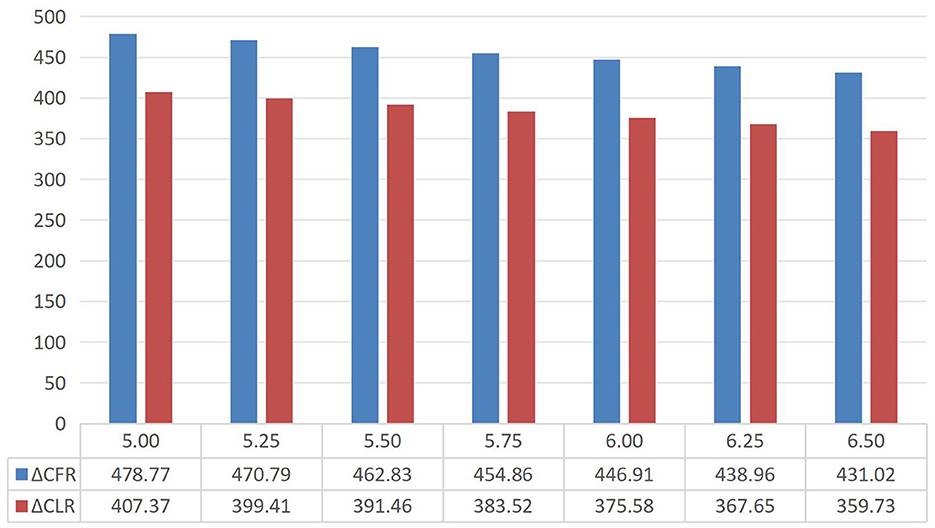
Figure 9. The effect of the change in Δp1 on the cost paid by retail enterprises to farmers and logistics enterprises.
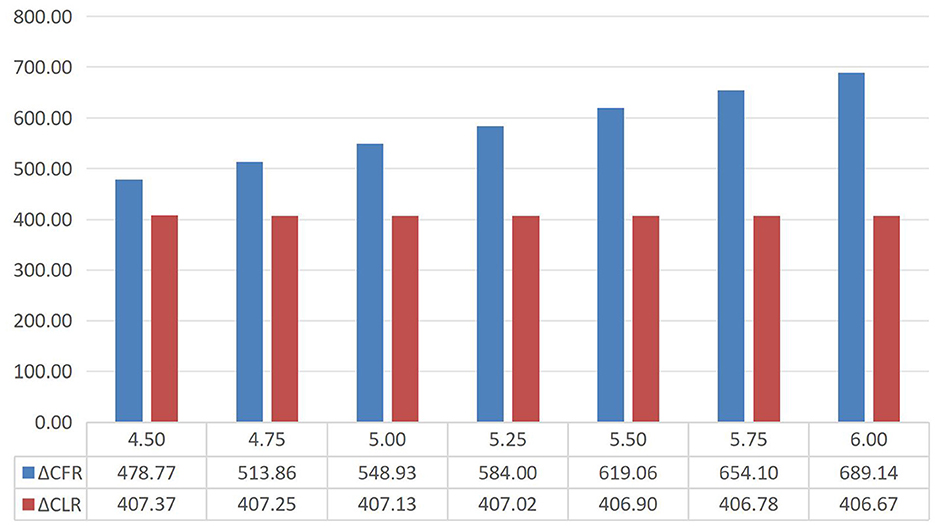
Figure 10. The effect of the change in Δp2 on the cost paid by retail enterprises to farmers and logistics enterprises.
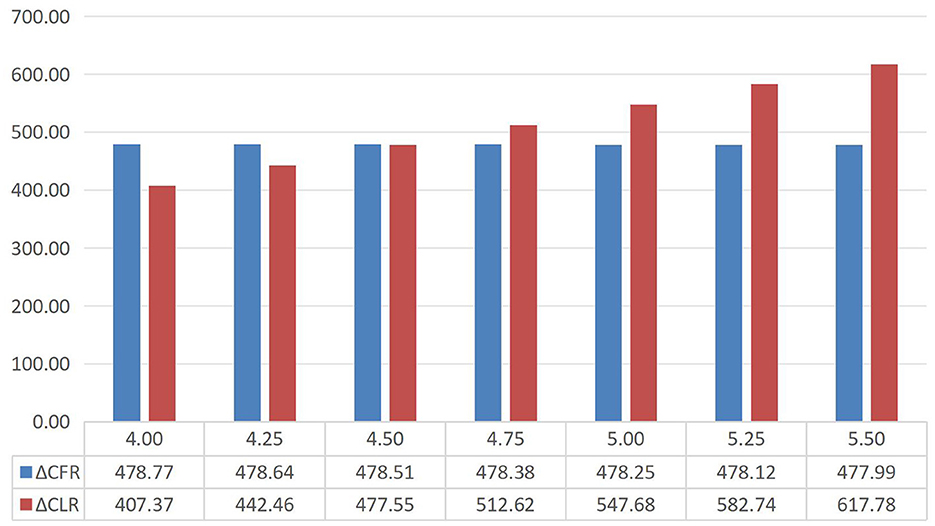
Figure 11. The effect of the change in Δp3 on the cost paid by retail enterprises to farmers and logistics enterprises.
As can be seen from Figures 9–11, changes in different price change parameters have different effects on the cost paid by retail enterprises to farmers. The change in the additional price due to the digital input of farmers has a positive impact on the change of the cost paid by retail enterprises to farmers. This indicates that when the digital input of farmers and the implementation of the intelligent product management strategy at the production end are successfully transformed into price advantages in the market, their own profit margins and shared value added value will be increased, and the corresponding cost paid by retail enterprises to farmers should be increased. However, the additional price increase due to digital input of retail enterprises and the additional price increase due to digital input of logistics enterprises have a negative impact on the cost change of retail enterprises to farmers. This indicates that the additional price increase caused by the digital input of logistics enterprises or the rising price caused by the digital marketing of retail enterprises may lead to the loss of farmers' interests, reduce their shared value added value, and thus reduce the cost paid by retail enterprises to farmers.
In addition, as can be seen from Figures 9–11, the influence of different price change parameters on the cost paid by retail enterprises to logistics enterprises presents the effect of travel alienation. Specifically, the change of the additional price due to the digitalization input of logistics enterprises has a positive driving effect on the change of the cost paid by retail enterprises to logistics enterprises. This shows that when logistics enterprises successfully implement the information-based storage and transportation strategy at the circulation end through digital investment, and effectively transform it into price competitiveness in the market, their profit margins and shared value appreciation will be expanded, and accordingly, the cost that retail enterprises need to pay to logistics enterprises will also increase. On the contrary, the extra price due to the digital input of retail enterprises and the extra price due to the digital input of farmers have a negative impact on the change of the cost of retail enterprises to logistics enterprises. This implies that the price increase brought about by the digital input of farmers, or the price increase driven by the digital input of retail enterprises, may squeeze the profit margin of logistics enterprises and weaken their shared value appreciation, resulting in a corresponding reduction in the cost paid by retail enterprises to logistics enterprises. To sum up, the changes of different price parameters have complex and diverse influences on the cost changes paid by retail enterprises to farmers and logistics enterprises. It is necessary to adjust the cost changes of retail enterprises to farmers and logistics enterprises according to the changes of different price parameters.
6 Conclusion and recommendations
The use of digital technology for the commercialization of agricultural products for all factors, whole processes, all-round reshaping, fine and intelligent management of agricultural production and circulation, promote the improvement of agricultural production efficiency and quality, precise and intelligent management of agricultural sales, accurate matching of agricultural production and consumption, improve the value of agricultural products, and achieve high-quality commercialization of agricultural products. The problem of value-added sharing is the key factor in ensuring the success and long-term development of high-quality commercialization of digitally enabled agricultural products. Based on this, this study focuses on the three core interests of farmers, logistics enterprises and retail enterprises, considers the digital investment degree of multiple subjects, and uses the Shapley value method to discuss the value-added sharing problem of high-quality commercialization of digitally empowered agricultural products. First, the Shapley value method is applied to solve the value-added value of digitally empowered agricultural products after high-quality commercialization. Secondly, we get the reasonable sharing conditions of value-added value and analyze the relationship between the change of payment cost of retail enterprises and the degree of digital investment of multiple entities and the price change caused by it.
6.1 Research conclusion
The results show that: (1) Stakeholders who contribute to the high-quality commercialization of digitally enabled agricultural products will share the value-added of high-quality commercialization value, but different levels of digital investment and high-quality commercialization results will lead to different shared value appreciation. (2) Changes in the digital investment degree of farmers, the digital investment degree of logistics enterprises and the digital investment degree of retail enterprises will affect the cost changes of retail enterprises to farmers and logistics enterprises to different degrees. (3) The result changes (price changes) caused by the commercialization of high-quality agricultural products with digital empowerment will also affect the cost changes paid by retail enterprises to farmers and logistics enterprises to varying degrees.
6.2 Managerial recommendations
The findings are as follows: (1) We should give full play to the advantages of digital technology to promote the high-quality commercialization of agricultural products. The realization of high-quality commercialization value creation of agricultural products through the reform and application of digital technology is a necessary prerequisite for multi-subject sharing and obtaining value, which is conducive to multi-subject realizing high-quality commercialization of agricultural products and obtaining economic benefits. (2) Mutual benefit and win-win results should be achieved through “credible and transparent + benefit transfer + value-added sharing,” and the enthusiasm of multiple subjects, especially small and micro subjects, to promote high-quality commercialization of agricultural products should be stimulated and maintained. Retail enterprises should fully consider the interests and needs of various subjects such as farmers and logistics enterprises, and set up a fair and transparent value-added sharing strategy according to the contribution degree of each subject, so as to ensure that the resources and efforts invested by each subject in the digital transformation can be reasonably returned to encourage each subject to invest in the high-quality commercialization process of agricultural products. (3) When implementing value-added sharing, retail enterprises should adjust their strategies appropriately according to the digital investment degree of multiple entities and product price changes to achieve more accurate and reasonable value-added sharing. When the degree of digital investment of farmers and logistics enterprises increases, retail enterprises should pay more costs to realize the reasonable value-added sharing of farmers and logistics enterprises. When the commoditization of high-quality agricultural products leads to higher product prices, retailers should consider various ways to adjust the shared value added.
6.3 Limitations and future research directions
This study uses Shapley value method to explore the reasonable value-added sharing of multiple subjects in the high-quality commercialization of agricultural products, enriching the research content of high-quality commercialization of agricultural products, and providing some help for realizing high-quality commercialization of agricultural products, but does not include consumers in the model. After the realization of the high-quality commercialization of agricultural products, it is also worth paying attention to whether consumers should share the value-added value of agricultural products. In future research, it is possible to consider studying the value-added sharing of high-quality commercialization value of agricultural products by farmers, logistics enterprises, retail enterprises and consumers. At the same time, the paper does not consider the impact of relevant government policies and market competition on value appreciation. The government's subsidy policies for the digital transformation of farmers, logistics enterprises and retail enterprises will directly affect the cost structure and income level of farmers, logistics enterprises and retail enterprises. The competition of similar agricultural products in the market, including the number of competitors, market share, brand influence, etc., will also affect the pricing strategy of agricultural products and the competition for market share, which can be further discussed in future research.
Data availability statement
The original contributions presented in the study are included in the article/supplementary material, further inquiries can be directed to the corresponding author.
Author contributions
SZ: Conceptualization, Funding acquisition, Project administration, Writing – review & editing. SJ: Formal analysis, Methodology, Software, Writing – original draft.
Funding
The author(s) declare financial support was received for the research, authorship, and/or publication of this article. This study was funded by the National Social Science Fund of China (No: 22CGL023), the China Postdoctoral Science Foundation (No. 2023M730889), the Heilongjiang Postdoctoral Grant (No: LBH-Z22203), the Harbin University of Commerce Doctoral Research Initiation Support Program (No: 22BQ32), and the Fundamental Research Funds in Universities of Heilongjiang Province.
Conflict of interest
The authors declare that the research was conducted in the absence of any commercial or financial relationships that could be construed as a potential conflict of interest.
Publisher's note
All claims expressed in this article are solely those of the authors and do not necessarily represent those of their affiliated organizations, or those of the publisher, the editors and the reviewers. Any product that may be evaluated in this article, or claim that may be made by its manufacturer, is not guaranteed or endorsed by the publisher.
References
Abiri, R., Rizan, N., Balasundram, S. K., Shahbazi, A. B., and Abdul-Hamid, H. (2023). Application of digital technologies for ensuring agricultural productivity. Heliyon 2023:e22601. doi: 10.1016/j.heliyon.2023.e22601
Anteneh, A., and Endalew, B. (2023). Determinants of teff commercialization among smallholder farmers: beta regression approach. Cogent. Soc. Sci. 9:2209987. doi: 10.1080/23311886.2023.2209987
Benitez-Altuna, F., Materia, V. C., Bijman, J., Gaitán-Cremaschi, D., and Trienekens, J. (2024). Farmer-buyer relationships and sustainable agricultural practices in the food supply chain: the case of vegetables in Chile. Agribusiness 40, 3–30. doi: 10.1002/agr.21829
Birhanu, F. Z., Tsehay, A. S., and Bimerew, D. A. (2021). The effects of commercialization of cereal crops on multidimensional poverty and vulnerability to multidimensional poverty among farm households in Ethiopia. Dev. Stud. Res. 8, 378–395. doi: 10.1080/21665095.2021.2002704
Bocean, C. G. A. (2024). Cross-sectional analysis of the relationship between digital technology use and agricultural productivity in EU countries. Agriculture 14:519. doi: 10.3390/agriculture14040519
Campos, S., and Madureira, L. (2019). Can healthier food demand be linked to farming systems' sustainability? the case of the Mediterranean diet. Int. J. Food Syst. Dyn. 10, 262–277. doi: 10.18461/ijfsd.v10i3.17
Cazzuffi, C., McKay, A., and Perge, E. (2020). The impact of agricultural commercialisation on household welfare in rural Vietnam. Food Pol. 94:101811. doi: 10.1016/j.foodpol.2019.101811
Chegere, M. J., and Kauky, M. S. (2022). Agriculture commercialisation, household dietary diversity and nutrition in Tanzania. Food Pol. 113:102341. doi: 10.1016/j.foodpol.2022.102341
Chen, W., Qiu, J., Zhao, J., Chai, Q., and Dong, Z. Y. (2021). Bargaining game-based profit allocation of virtual power plant in frequency regulation market considering battery cycle life. IEEE Trans. Smart Grid 12, 2913–2928. doi: 10.1109/TSG.2021.3053000
Dey, S., and Singh, P. K. (2023). Role of market participation on smallholder vegetable farmers' wellbeing: evidence from matching approach in Eastern India. Agribusiness 39, 1217–1237. doi: 10.1002/agr.21813
Eidt, C. M., Pant, L. P., and Hickey, G. M. (2020). Platform, participation, and power: how dominant and minority stakeholders shape agricultural innovation. Sustainability 12:461. doi: 10.3390/su12020461
Etuk, E. A., and Ayuk, J. O. (2021). Agricultural commercialisation, poverty reduction and pro-poor growth: evidence from commercial agricultural development project in Nigeria. Heliyon 7:e06818. doi: 10.1016/j.heliyon.2021.e06818
Fan, L., Wang, P., Yu, W., Zhao, Q., and Su, Z. (2023). Agriculture-type rural transformation in underdeveloped areas of China from the perspective of commercialization: a case study of Tang county in Hebei. Econ. Geogr. 43, 155–164. doi: 10.15957/j.cnki.jjdl.2023.02.016
Gebrie, T., and Teka, B. (2019). Determinants of commercialization of agricultural products in East and West Gojjam, and Awi Zones, Amahara Region, Ethiopia. J. Market. Consum. Res. 63, 40–48. doi: 10.7176/JMCR/63-04
Gobie, W., and Wosene, G. (2021). A review paper on smallholder agricultural commercialization and participation in Ethiopia. Int. J. Agricult. Stat. Sci. 17, 147–161. Available at: https://connectjournals.com/03899.2021.17.147
Hidayati, D. R., Garnevska, E., and Ramilan, T. (2023). Assessing smallholders' heterogeneity towards sustainable agrifood value chain in developing countries. Br. Food J. 125, 4307–4334. doi: 10.1108/BFJ-11-2022-0940
Kayikci, Y., Subramanian, N., Dora, M., and Bhatia, M. S. (2022). Food supply chain in the era of Industry 4.0: blockchain technology implementation opportunities and impediments from the perspective of people, process, performance, and technology. Product. Plan. Contr. 33, 301–321. doi: 10.1080/09537287.2020.1810757
Kihiu, E. N., and Amuakwa-Mensah, F. (2021). Agricultural market access and dietary diversity in Kenya: gender considerations towards improved household nutritional outcomes. Food Pol. 100:102004. doi: 10.1016/j.foodpol.2020.102004
Konfo, T. R. C., Djouhou, F. M. C., Hounhouigan, M. H., Dahouenon-Ahoussi, E., Avlessi, F., Sohounhloue, C. K. D., et al. (2023). Recent advances in the use of digital technologies in agri-food processing: a short review. Appl. Food Res. 2023:100329. doi: 10.1016/j.afres.2023.100329
Liu, J. C., and Li, D. F. (2022). Improved Shapley values based on players' least square contributions and their applications in the collaborative profit sharing of the rural E-commerce. Gr. Decision Negotiat. 31, 7–22. doi: 10.1007/s10726-021-09741-2
Long, Z., and Li, L. (2023). Opportunities and challenges of digital development in circulation under the background of rural revitalization. Asian Agricult. Res. 15, 1–15. doi: 10.22004/ag.econ.342029
Ma, S., He, G., and Guo, J. (2022). The welfare effect of digital agriculture: deconstruction from the perspective of value recreation and value redistribution. Iss. Agri-Cult. Econ. 509, 10–26. doi: 10.13246/j.cnki.iae.2022.05.006
Meng, F., Li, Z., Dong, Q., Fu, L., and Zhang, Y. (2023). Profit allocation on a four-echelon supply chain in perspective of cooperative games on augmenting systems. Expert Syst. Appl. 219:119639. doi: 10.1016/j.eswa.2023.119639
Mithas, S., Chen, Z. L., Saldanha, T. J., and De Oliveira Silveira, A. (2022). How will artificial intelligence and Industry 4.0 emerging technologies transform operations management? Prod. Operat. Manag. 31, 4475–4487. doi: 10.1111/poms.13864
Mulenga, B. P., Ngoma, H., and Nkonde, C. (2021). Produce to eat or sell: panel data structural equation modeling of market participation and food dietary diversity in Zambia. Food Pol. 102:102035. doi: 10.1016/j.foodpol.2021.102035
Nkegbe, P. K., Araar, A., Abu, B. M., Alhassan, H., Ustarz, Y., Setsoafia, E. D., et al. (2022). Nonfarm activity and market participation by farmers in Ghana. Agricult. Food Econ. 10:4. doi: 10.1186/s40100-022-00210-1
Ochieng, J., Knerr, B., Owuor, G., and Ouma, E. (2020). Food crops commercialization and household livelihoods: evidence from rural regions in Central Africa. Agribusiness 36, 318–338. doi: 10.1002/agr.21619
Ogutu, S. O., Gödecke, T., and Qaim, M. (2020). Agricultural commercialisation and nutrition in smallholder farm households. J. Agricult. Econ. 71, 534–555. doi: 10.1111/1477-9552.12359
Ogutu, S. O., and Qaim, M. (2019). Commercialization of the small farm sector and multidimensional poverty. World Dev. 114, 281–293. doi: 10.1016/j.worlddev.2018.10.012
Panggabean, Y. B. S., and Arsyad, M. (2023). The future of coffee, digital technology and farmer's income. Int. J. Sustain. Dev. Plan. 18:209. doi: 10.18280/ijsdp.180209
Ruan, J., Liu, T., Feng, X., Qiao, Z., Huo, X., Zhu, Y., et al. (2020). Digital agriculture operation management: key issues, theoretical approaches and demonstration projects. Manag. World. 36, 222–233. doi: 10.19744/j.cnki.11-1235/f.2020.0130
Schulte, O., Mumber, J., and Nguyen, T. T. (2023). Agricultural commercialisation, asset growth and poverty in rural Vietnam. Austr. J. Agricult. Resour. Econ. 67, 388–416. doi: 10.1111/1467-8489.12517
Sekyi, S., Abu, B. M., and Nkegbe, P. K. (2020). Effects of farm credit access on agricultural commercialization in Ghana: empirical evidence from the northern Savannah ecological zone. Afri. Dev. Rev. 32, 150–162. doi: 10.1111/1467-8268.12424
Sekyi, S., Adom, P. K., and Adams, A. (2023). Linking crop specialization to agricultural commercialization: empirical evidence from the Northern Savannah Ecological Zone of Ghana. J. Develop. Areas 57, 89–105. doi: 10.1353/jda.2023.0024
Shapley, L. (1953). Quota Solutions op n-Person Games. Eds. E. Artin and M. Morse, 343. doi: 10.1515/9781400881970-021
Tabe Ojong, M. P. J., Hauser, M., and Mausch, K. (2022). Does agricultural commercialisation increase asset and livestock accumulation on smallholder farms in Ethiopia? J. Dev. Stud. 58, 524–544. doi: 10.1080/00220388.2021.1983170
Tang, M. (2023). Digital technology empowers the high-quality development of agriculture: taking intelligent agriculture in Dasheng Town, Yubei District, Chongqing as an example. J. Big Data Comput. 1:21. doi: 10.62517/jbdc.202301405
Thorpe, J. (2018). Procedural justice in value chains through public-private partnerships. World Dev. 103, 162–175. doi: 10.1016/j.worlddev.2017.10.004
Tuni, A., Rentizelas, A., and Chipula, G. (2022). Barriers to commercialise produce for smallholder farmers in Malawi: an interpretive structural modelling approach. J. Rural Stud. 93, 1–17. doi: 10.1016/j.jrurstud.2022.05.003
Usman, M. A., and Callo-Concha, D. (2021). Does market access improve dietary diversity and food security? evidence from Southwestern Ethiopian smallholder coffee producers. Agricult. Food Econ. 9:18. doi: 10.1186/s40100-021-00190-8
Usman, M. A., and Haile, M. G. (2022). Market access, household dietary diversity and food security: evidence from Eastern Africa. Food Pol. 113:102374. doi: 10.1016/j.foodpol.2022.102374
Yang, J. (2019). Profit distribution of farmer-supermarket direct purchase model with unequal power. Iss. Agricult. Econ. 7, 93–102. doi: 10.13246/j.cnki.iae.20190612.002
Zhao, B., and Zhang, H. (2021). Research on the operation mechanism and implementation modes of digital agricultural products traceability system. Iss. Agricult. Econ. 8, 52–62. doi: 10.13246/j.cnki.iae.2021.08.006
Zheng, H., and Ma, W. (2023). Impact of agricultural commercialization on dietary diversity and vulnerability to poverty: insights from Chinese rural households. Econ. Anal. Pol. 80, 558–569. doi: 10.1016/j.eap.2023.09.007
Keywords: digital empowerment, high-quality commercialization of agricultural products, quality of agricultural products, value-added sharing, Shapley
Citation: Zhan S and Jin S (2024) Value sharing strategy of digital empowerment high-quality commercialization of agricultural products. Front. Sustain. Food Syst. 8:1491795. doi: 10.3389/fsufs.2024.1491795
Received: 07 September 2024; Accepted: 07 November 2024;
Published: 26 November 2024.
Edited by:
Dengpan Xiao, Hebei Normal University, ChinaReviewed by:
Cidonea Deponti, Universidade de Santa Cruz do Sul, BrazilEsther Folarin, Covenant University, Nigeria
Copyright © 2024 Zhan and Jin. This is an open-access article distributed under the terms of the Creative Commons Attribution License (CC BY). The use, distribution or reproduction in other forums is permitted, provided the original author(s) and the copyright owner(s) are credited and that the original publication in this journal is cited, in accordance with accepted academic practice. No use, distribution or reproduction is permitted which does not comply with these terms.
*Correspondence: Shanshan Jin, amluc2hhbnNoYW4wMjE2QDE2My5jb20=
 Shuai Zhan1,2
Shuai Zhan1,2 Shanshan Jin
Shanshan Jin